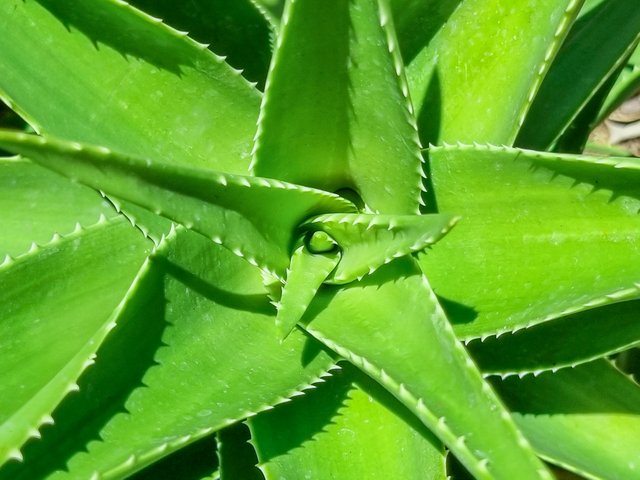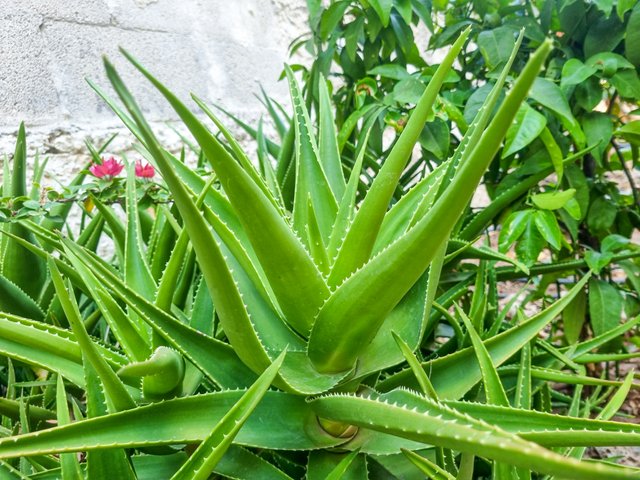In my yard grows an amazing plant. It is well known to many for its healing properties. But it attracted me not only from the point of view of medicine and cosmetology. This plant is a fascinating geometric composition.

So, Aloe Vera.
The first thing that catches the eye is the leaves. They are arranged in a spiral , and very often this spiral corresponds to Fibonacci spiral:
- The number of leaves clockwise and counterclockwise can be neighboring numberss from the Fibonacci sequence.
- This distribution helps the plant avoid overlapping of the lower leaves and collect sunlight as efficiently as possible.
Visually this creates a centripetal effect - the gaze seems to be drawn inward to the center of the rosette. It's a geometric effect, the photo resembles a fractal more than anything else.
The shape of the leaves is repeated and radiates from the center. Each leaf is like a radius of a circle. This is an n-gonal radial symmetry, where n is the number of leaves, often close to 5, 8, or 13 - which again brings us back to the Fibonacci numbers.
The radial structure creates a sense of order, enhances the perception of balance , makes the plant visually stable and unified.
Each leaf is an elongated curved triangle with certain features. Each leaf has a pointedf tip and a widened base with a smooth curvature along its axis. Interestingly, when viewed from above, the leaves form not straight, but curved triangular segments , which gives the composition a certain “plasticity.”
If you estimate, the angle between the leaves in the rosette may be close to the golden angle which is ≈137.5°. This is a special value at which elements are evenly distributed around a circle and do not overlap.
In the photo you can see that the leaves alternate: large, then medium, then large again. This alternating arrangement of leaves helps the plant maintain symmetry even during asymmetric growth.

In life we rarely pay attention to such little things, but this is truly something amazing. It's worth just thinking about the essence.